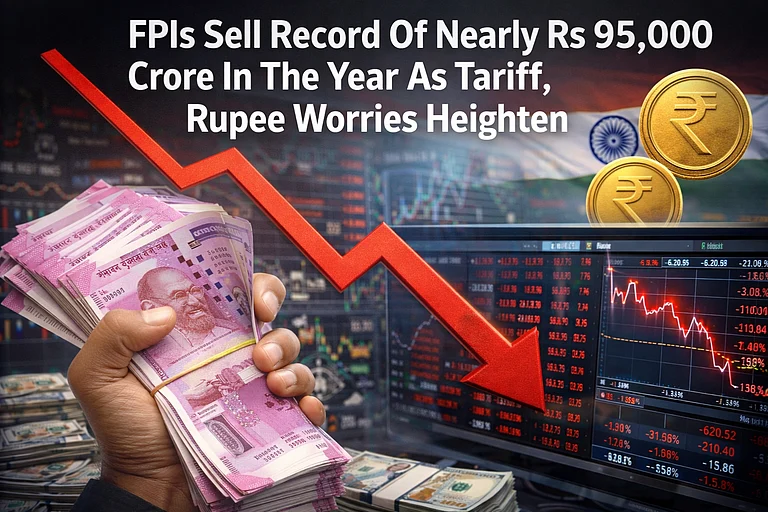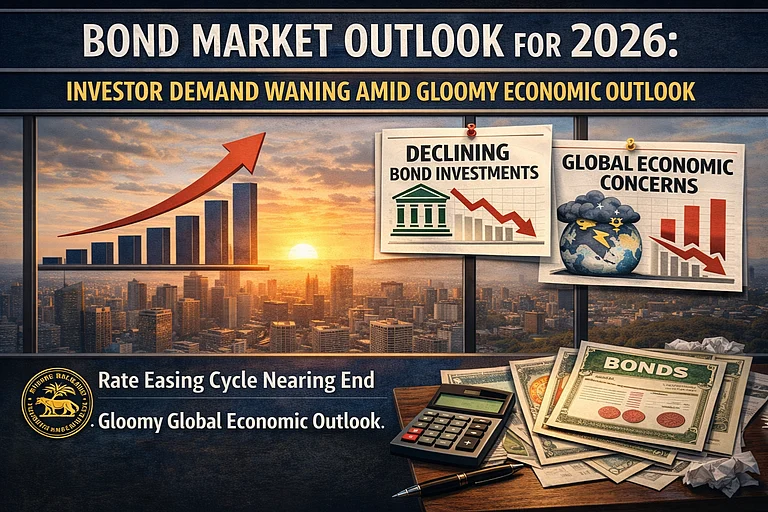Foreign investors have once again started selling in India’s debt market. So far in June 2025, they have pulled out Rs 25,038 crore from the market. This comes right after a strong inflow of Rs 12,155 crore in May, showing a sudden shift in sentiment.
The June sell-off was led by a withdrawal of Rs 12,988 crore under fully accessible route (FAR), followed by Rs 6,144 crore from the voluntary retention route (VRR) and Rs 5,906 crore under the general limit, as per data from National Securities Depository Limited (NSDL).
It has been a volatile year for foreign portfolio investors (FPI) debt flows. After modest buying of Rs 571 crore in January, inflows picked up in February - Rs 10,517 crore, and peaked in March with Rs 37,789 crore. However, sentiment shifted sharply in April, when FPIs pulled out Rs 24,384 crore, before rebounding in May, NSDL data showed.
Why Foreign Investors Are Selling In India’s Debt Market
According to VK Vijayakumar, chief investment strategist at Geojit Financial Services, this trend is likely to continue as the gap between the US and Indian bond yields has narrowed, reducing the appeal of Indian debt for foreign investors.
As of June 28, 2025, the gap between India’s 10-year government bond yield and the US 10-year Treasury yield stood at 204 basis points (bps), with India’s yield at 6.31 per cent and the US at 4.27 per cent. At the start of the year, this difference was wider, about 225 bps, with Indian bonds yielding 6.758 per cent and US Treasuries at 4.507 per cent.
This narrowing spread has made Indian debt a little less attractive for foreign investors. Typically, FPIs look for higher returns in emerging markets, such as India, but when the advantage starts to shrink, they often move money to safer or better-yielding options.
Global Rate Pause Weighs On Sentiment
Analysts at Kotak Securities also attribute this sell-off to continued escalations in the Middle East, and a pause in the US Federal Reserve Funds rate by the Federal Open Market Committee (FOMC).
The US Fed, in its June meeting, decided to keep its policy rate unchanged at 4.25-4.50 per cent, citing expectations of acceleration in goods inflation in the near term due to reciprocal tariffs.
Further, Fed Chair Jerome Powell, in his testimony to the US Congress last week, reiterated that the central bank is in no hurry to cut rates, despite mounting pressure from US President Donald Trump, who has been pushing for faster rate cuts.
Similarly, the Bank of England kept their benchmark policy rates unchanged at 4.25 per cent, and the Bank of Japan kept their policy rates unchanged at 0.50 per cent.
On the other hand, the Reserve Bank of India (RBI), reduced interest rates by 50 bps to 5.50 per cent.
However, according to Kotak Securities, the move had limited impact on bond markets.
It said: “The minutes of the RBI monetary policy committee (MPC) released on June 20, 2025 continued to indicate the MPC’s focus on growth concerns and transmission of the larger-than-expected rate cut, and has a muted impact on bond markets."
Going forward, the brokerage said, the bond market sentiments will be driven by geopolitical developments.














